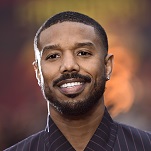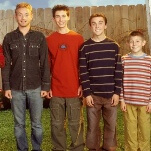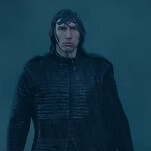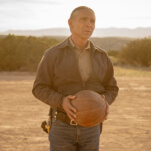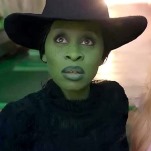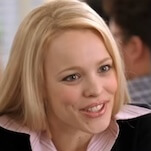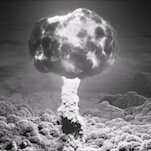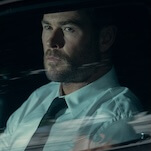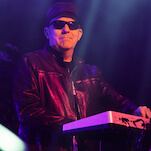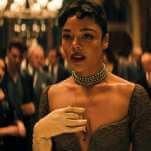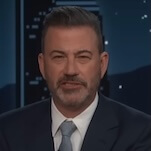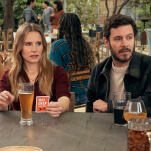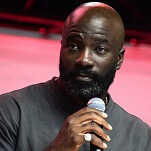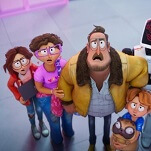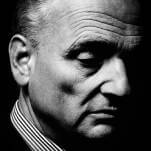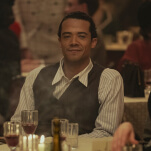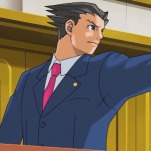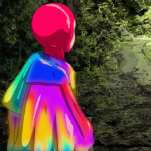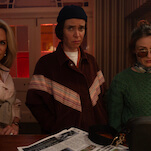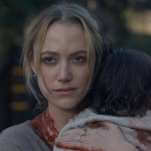Doctor Who: "The Impossible Astronaut"
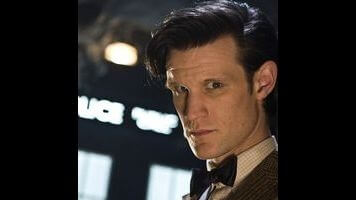
“I’ve been running faster than I’ve ever run. And I’ve been running all my life.” —The Doctor, “The Impossible Astronaut”
That quote about sums up this first episode back, doesn’t it? Go go go, and don’t take a moment to catch your breath or you might miss something. Written by Stephen Moffatt, now entering his second season as showrunner, “The Impossible Astronaut” is one of the most propulsive episodes of Doctor Who I’ve ever seen, opening with a rush of action and closing with a head-scratching cliffhanger that keeps rolling out new elements of mystery up to its final seconds. But it’s also dense: There’s so much plot and so many callbacks and ominous bits of foreshadowing packed into its 43 minutes it’s a wonder that it has any time for anything but plot, callbacks, and foreshadowing. And yet it does find time for other highlights: There’s The Doctor announcing that Stetsons are the new fezzes against a Utah backdrop and the rush of excitement from seeing him reunited with Amy and Rory and, in short order, River. (At least I felt that. (And if you didn’t, are you really sure you should be watching the show?) And there's the ominous undertone that feels like it's going to be the keynote for the many episodes to come.
But for now, let's keep the focus on this one. We’re back for another season, and "The Impossible Astronaut" makes that return a welcome one. Although, it’s best not to get too comfortable: If I understand correctly, we’ll get seven episodes running up to the first part of a two-parter to air June 4th followed by a summer-long hiatus and six more episodes that will begin airing in September. That may be the best arrangement, though: Seven episodes like “The Impossible Astronaut” could leave viewers feeling wrung out and in need of a break.
That said, I really liked the episode, which apparently picks up the action at some indeterminate period after the events of “A Christmas Carol.” For Amy and Rory, the honeymoon is over, literally at least. They seem quite happy and settled into domestic life, if a bit restless, scanning for signs of The Doctor and eager to return to the life of adventure they know in his company. At least up to a point: As Amy’s late-episode revelation makes clear, their situation is about to change and, inevitably, make them a little less able to pack up for whimsical trips through time and space. And that’s not the only potential complication. As Rory listens to River explain her relationship with The Doctor, it becomes clear that he remains uneasy with the relationship between the Time Lord and Amy. Maybe it’s his own insecurity that makes him feel that way, but who’s not going to feel insecure next to a Time Lord?
Getting back to River: It feels like Moffatt’s starting to draw together some of the plot threads that have been floating around since he first introduced the character back in 2008’s “Silence In The Library.” We learn a bit more this week how she came to meet The Doctor and what they mean to each other. What’s more, we learn that the temporal disjointedness that’s made their relationship so confusing, at least to him, has tragic underpinnings. As she comes into his life, he fades out of hers, remembering her less as her memories of him pile up. Though I didn’t care that much for the movie, the situation reminds me of The Curious Case Of Benjamin Button. And, like Benjamin Button—if a bit more elegantly, for my money—it echoes the plight of anyone who’s watched a loved one fade into the shadowlands of dementia. This is not a story that ends well for River and she knows it, whatever flirtatious high spirits being around The Doctor stirs in her.
All that and we’ve barely touched on the plot, which careens 18th century London to Nixon’s White House with stops along the way for present-day Utah and the Laurel and Hardy film Sons Of The Desert (with its abundance of fez-wearers). All in pursuit of… Well, I’m still really not sure, honestly. We learn that The Doctor has business tied into the 1969 moon landing (“Space… 1969”) but also related somehow to a little kid regularly making terrified calls to President Nixon (played here by the not-too-Nixon-looking but not bad Stuart Milligan) about spacemen. We also learn that it’s all tied to some horrifying-looking creatures with the power to make people forget them the moment they’re out of view (a clever twist on the stone angels of “Blink”). How does it all tie together? Presumably the second part, “Day Of The Moon” will make that clear. (I’ve had to stop myself from watching it before I wrote this.)
But even if the specifics of the plot remain a mystery, there’s no confusion about the general tone of this two-part season-opener: This is an exciting way to begin the series, but also a dark one. Not only does it feature terrifying creatures and an imperiled child, we also see The Doctor die. And not just a fake death: a real mid-regeneration assassination at the hands of a spacesuit-clad acquaintance on the shores of some desert lake. He dies and his friends give him a Viking funeral. Though he reappears shortly thereafter, dropping in from a different point on the timeline, it’s not easy to forget his death, shake the grim mood it creates, or forget its implications. Did we really just see The Doctor die? Sure, this being Doctor Who there are a dozen (at least) ways for the show to write itself out of the moment. But it still gives the episode a tragic undertone that its sequel, and maybe the season, will have a hard time shaking no matter how many grotesque aliens it throws viewers’ way.


